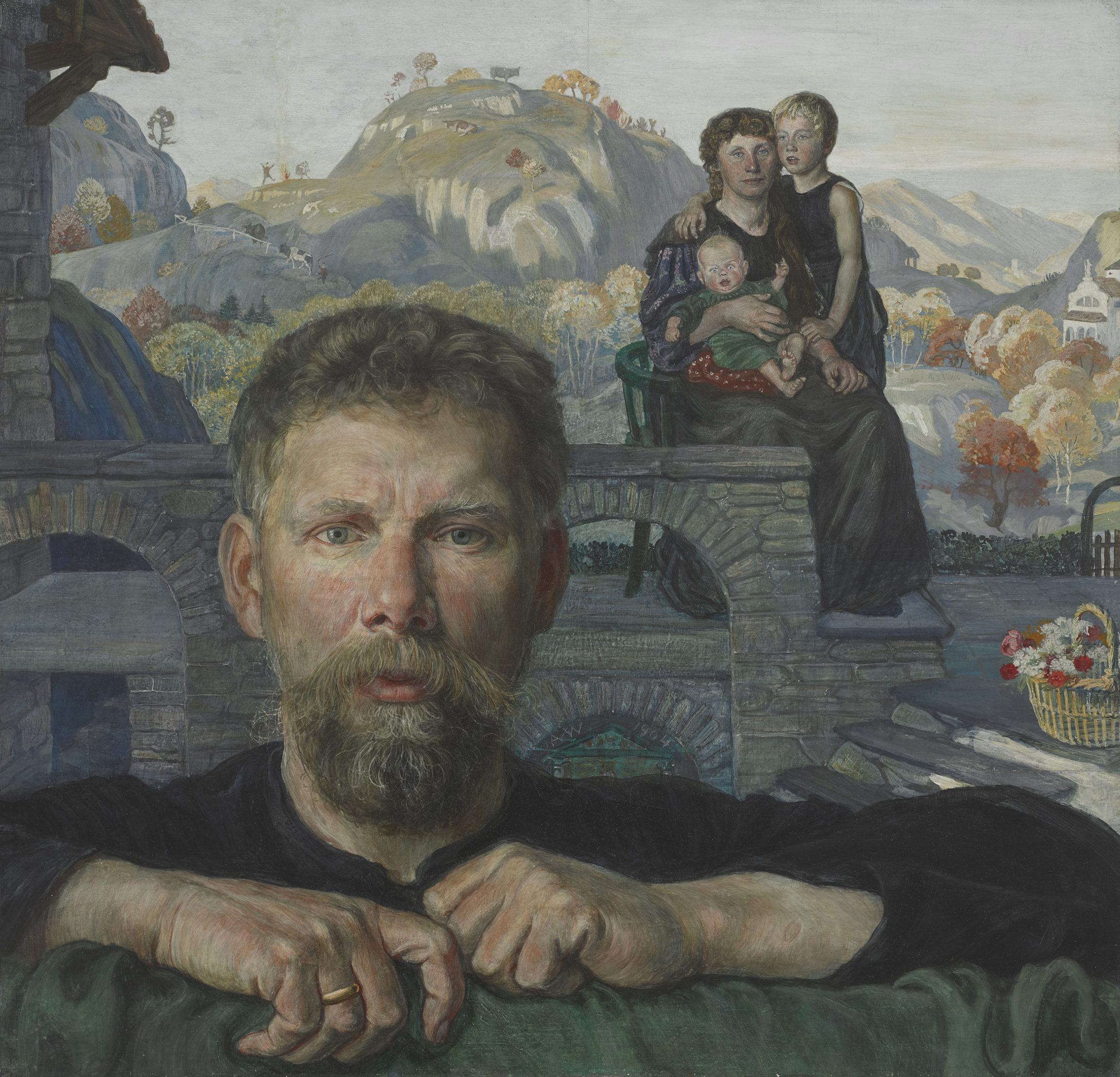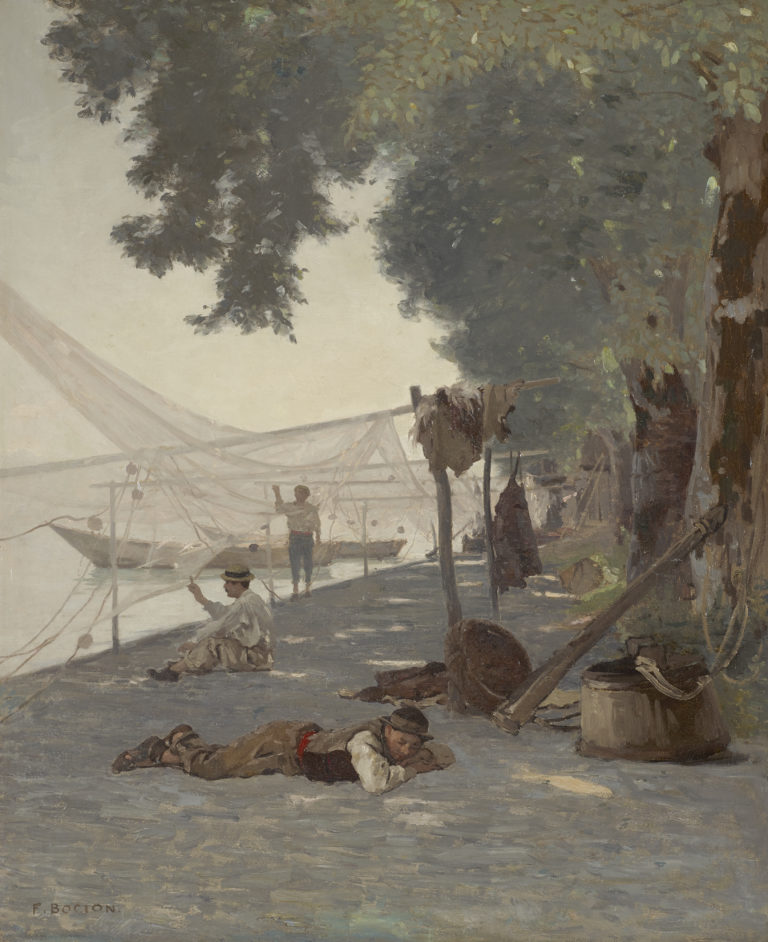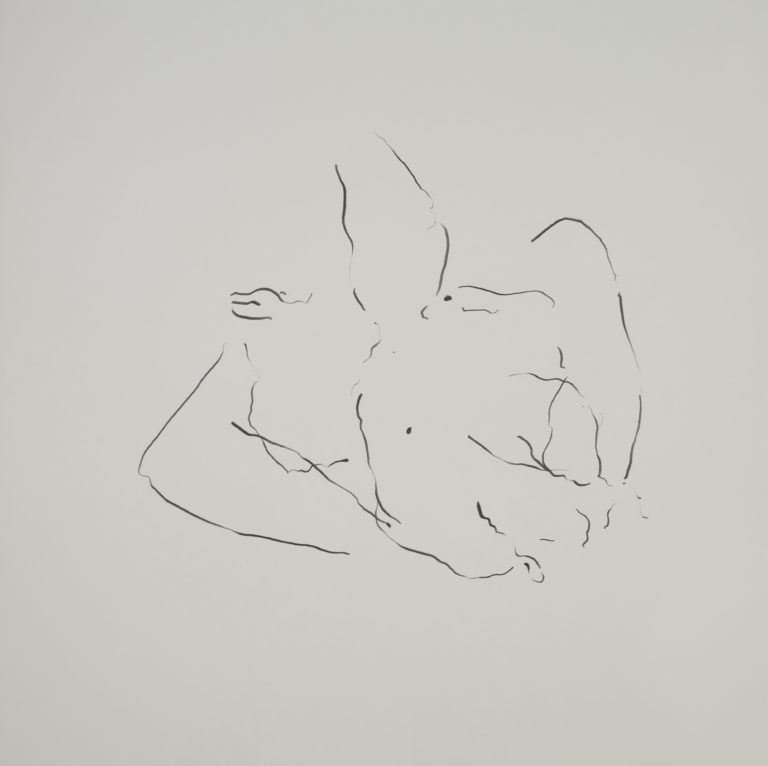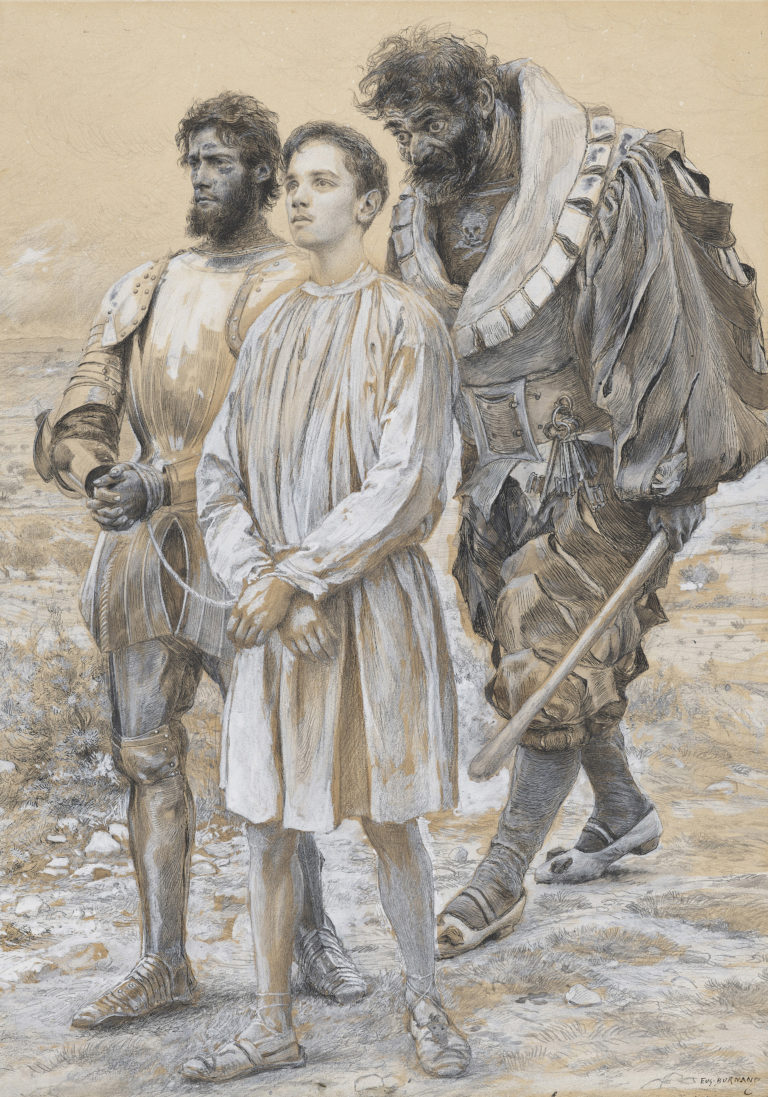Bibliography
Hortensia von Roda, ‘Das Familienbild – Weltis Bekennnis zur Heimat, zur Familie und zu sich selbst,’ in Albert Welti 1862-1912. Vom Haus der Träume zum Bundeshaus, exh. cat. Schaffhouse, Museum zu Allerheiligen, 1991: 24-33.
Lukas Gloor, Albert Welti (1862-1912), Stäfa, Th. Gut, 1987.




A number of features in this family portrait reflect the influence of the Northern Old Masters, including the historiated frame carved by the artist himself, the use of tempera, a verismo style, and a pale Rubenesque palette with white highlights. The artist, midway through his life and at the peak of his career, paints himself propped on his elbows in front of architectural features including a staircase and a bridge that reflect his awareness that he is at a turning point in life. The composition is based on three tiers. In the foreground is a head-and-shoulders portrait of the artist, his wedding ring on prominent display, indicating the importance of his family. In the middle ground is another group – the statue-like figures of his wife, Emeline, and his two sons. In the background is a mountain, with a shepherd climbing it and peasants on the summit dancing round a fire to mark midsummer, the season of ripeness. The landscape, inspired by the countryside around Locarno, reflects Albert Welti’s love of his native Switzerland.
Zurich-born Welti studied at the Academy of Fine Art in Munich from 1882. He was taught by Arnold Böcklin, who had a lasting influence on his work. His work displays a lifelong fondness for local colour, harmonious tones, and accentuated contrasts of light and dark. He was on the fringes of the modernist movement of his day, whose leading lights included Ferdinand Hodler, Giovanni Giacometti and Cuno Amiet. His skillful use of iconography hints at affinities with the Symbolist movement. Another quasi-anachronistic feature of his career was that, at a time when the traditional art market was rapidly becoming obsolete, most of his works were commissions. This work, for instance, was painted to order for the Solothurn patron of the arts Oskar Miller. Miller waited almost ten years for it before eventually refusing to buy it, as did Franz Rose-Doehlau, who gave Welti a pension on his return from Munich in 1895. When the work was at long last completed, the museum purchased it when it was presented at the Swiss National Fine Art Exhibition in 1904.